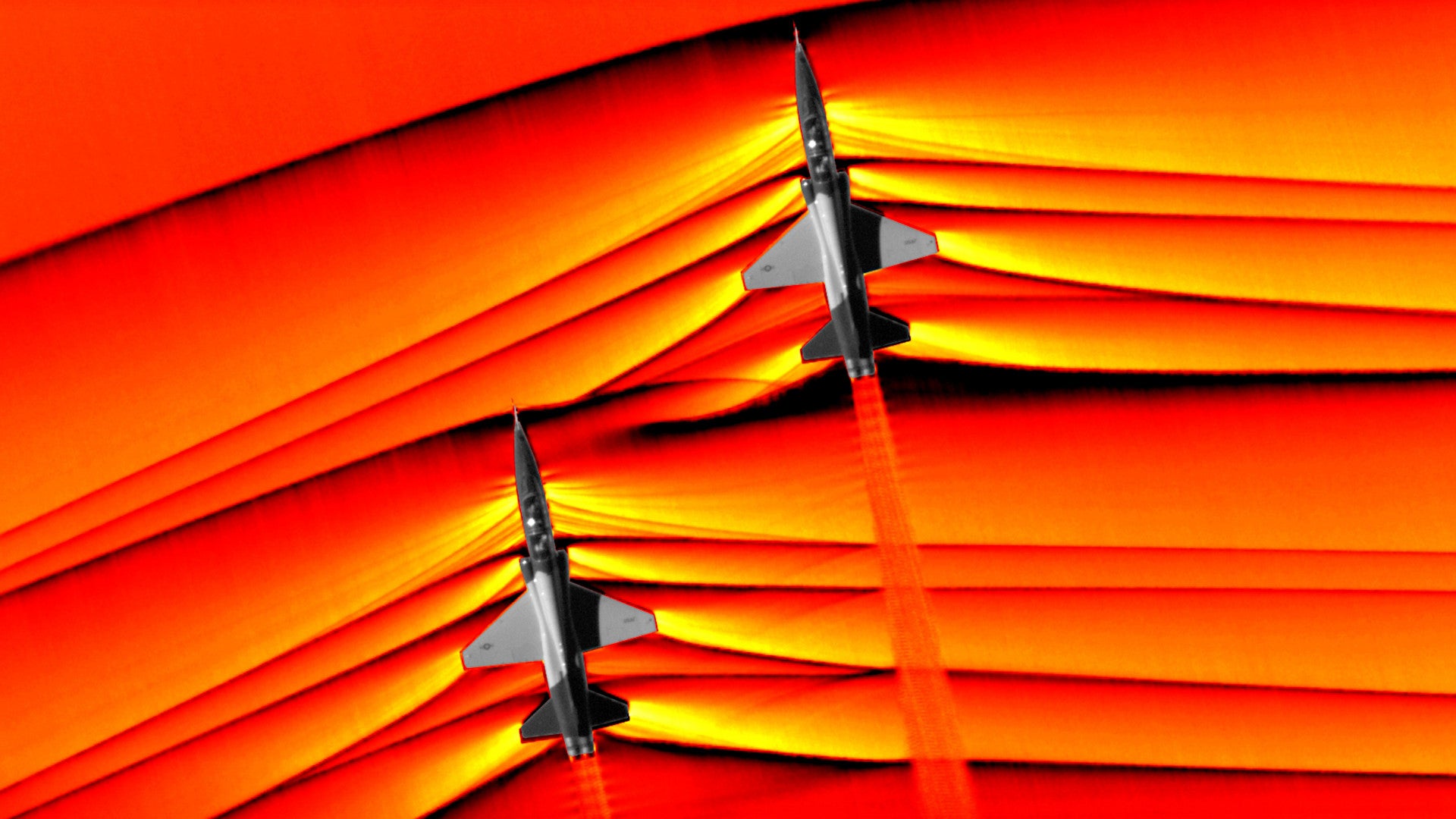The National Aeronautics and Space Administration has used an upgraded aerial camera system to take the first air-to-air picture of the supersonic shockwaves from two different planes interacting with each other. NASA will use this same system to gather data tosupport the development of the experimental X-59A Quiet Supersonic Transport, or QueSST, and for future research into aircraft flying faster than the speed of sound.
NASA released the image, and others from the same series of tests using the new airborne camera system, on Mar. 5, 2019. A Beechcraft B-200 King Air carrying the improved imagery equipment had taken the shots of two T-38 Talon jet trainer aircraft as part of the fourth phase of the Air-to-Air Background Oriented Schlieren program, or AirBOS. The planes had flown the missions from the Armstrong Flight Research Center, which is situated within Edwards Air Force Base in California.
“I am ecstatic about how these images turned out,” a J.T. Heineck, a scientist working on the AirBOS program out of NASA’s Ames Research Center in Mountain View, California, said in an official interview. “With this upgraded system, we have, by an order of magnitude, improved both the speed and quality of our imagery from previous research.”
NASA’s new camera system uses the so-called “Schlieren technique,” which is hardly new. German physicist August Toepler first came up with the concept in 1864. At its most basic, the concept involves using a high intensity light source and high quality lenses or mirrors to capture reflected light particles that end up disturbing “fluids” – including air – as a fast-moving object passes through them. The video below offers a more detailed explanation.

One of the applications of this kind of photograph has been to capture supersonic shockwaves to better understand how they form and then interact with an aircraft and their surroundings. To do this requires a plane carrying the camera to fly in a very specific position at exactly the right moment as another one goes screaming by faster than the speed of sound.
The product of more than a decade of research and development, the cameras NASA used in these latest flights is higher fidelity and can capture images faster, making it easier to grab a shot a the desired moment. The new system can also capture three times more data than previous types. It only takes a day to install the cameras in the B-200, rather than a week or more with either earlier systems, reducing the time it takes to schedule flying experiments.
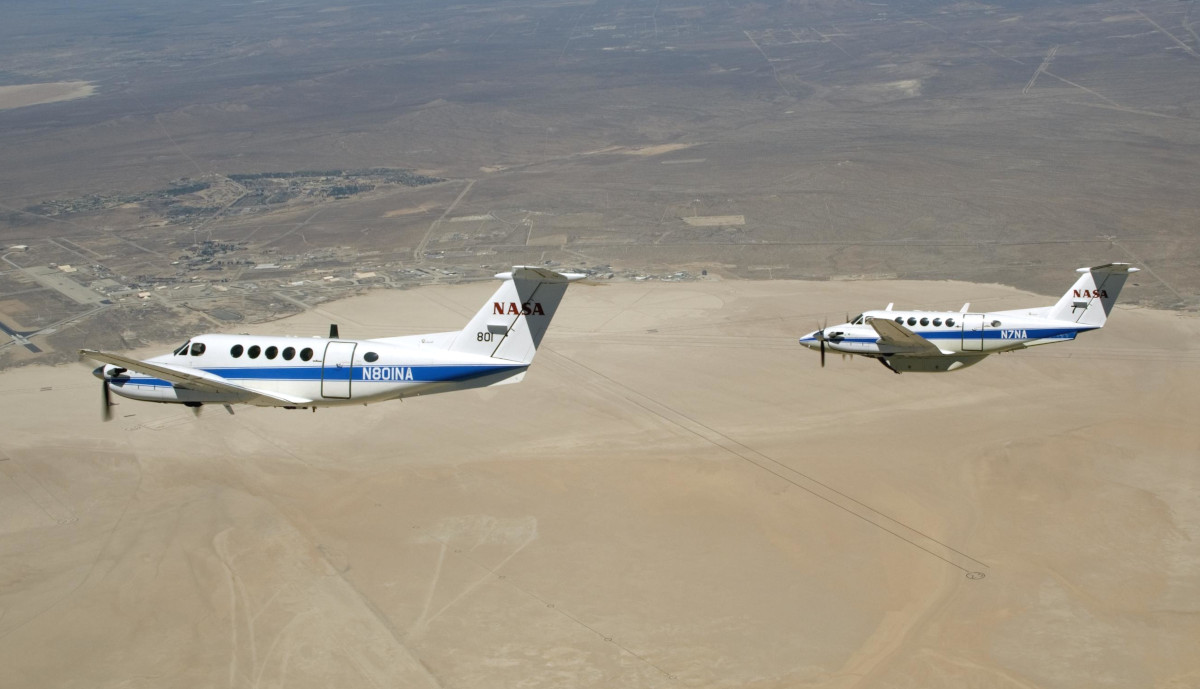
But even then the process isn’t exactly simple, especially if you’re trying to capture pictures within the relatively short window as the planes go from transonic to supersonic speed. Being able to grab a photo of two planes flying in formation close together is even more complicated and air-to-air photography can already be complex, in general.
NASA says that getting the image of the pair of T-38s required the B-200 to fly an orbit at 30,000 feet and come around to the exact right heading just as the two jets flew their own route 2,000 feet below. The new cameras are digital, but the high resolution images they grab at 1,400 frames per second – more than 20 times the fastest setting on many personal cameras – can fill up the system’s available memory in just three seconds.
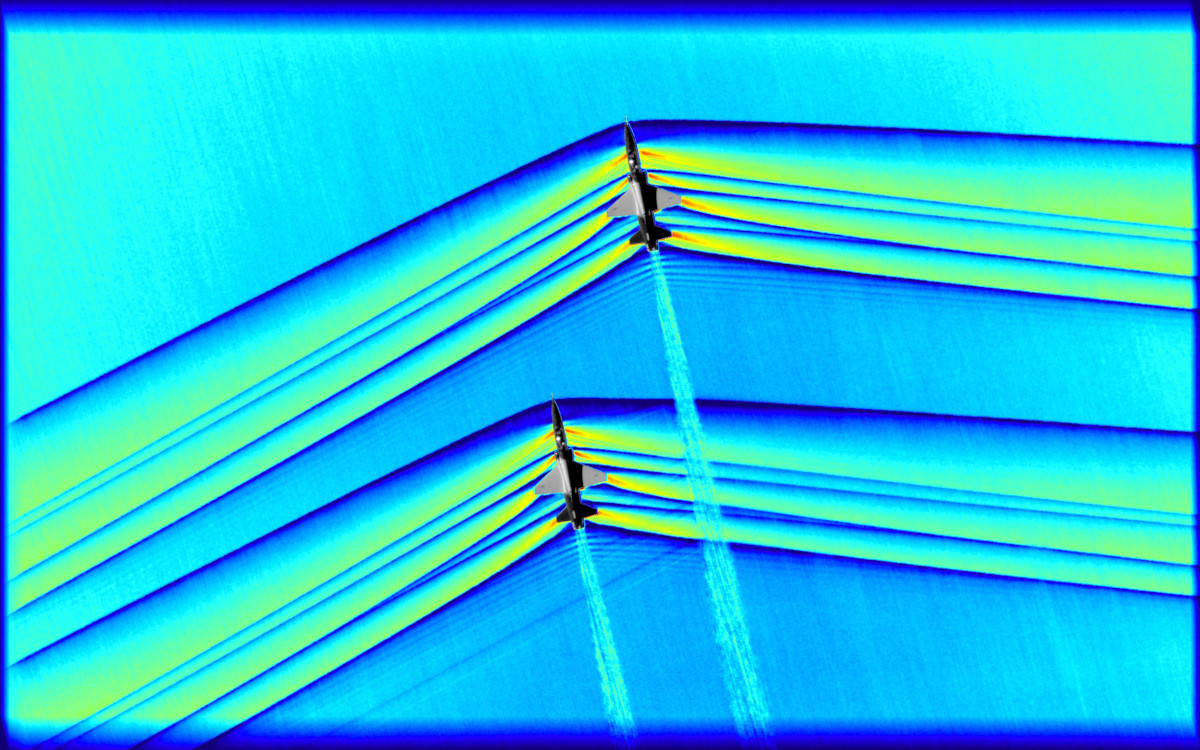
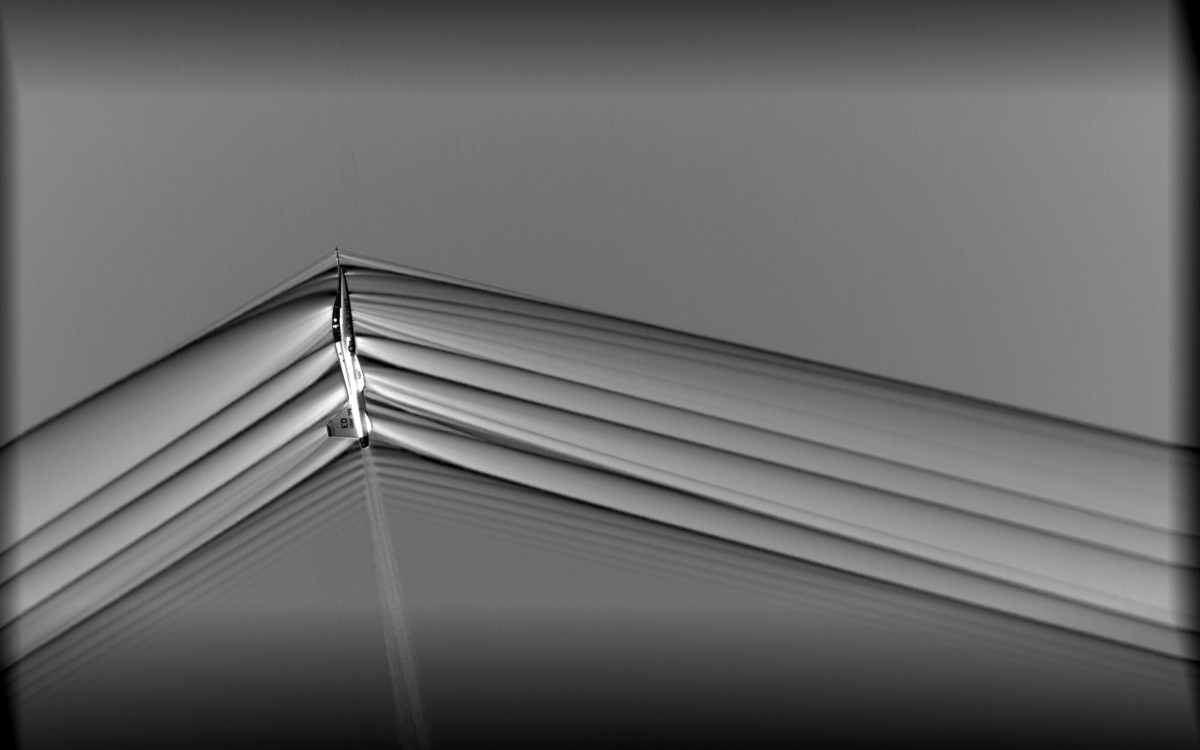
“The biggest challenge was trying to get the timing correct to make sure we could get these images,” Heather Maliska, the sub-project manager for AirBOS. “Our operations team has done this type of maneuver before. They know how to get the maneuver lined up, and our NASA pilots and the Air Force pilots did a great job being where they needed to be.”
The new camera system will be an extremely important tool for NASA going forward. One of AirBOS’ goals was to have the equipment ready before the X-59A QueSST begins flying. The design of this aircraft is supposed to minimize the impact of sonic booms and could be a stepping stone to practical commercial supersonic air travel.

The Federal Aviation Authority (FAA) in the United States, as well as a foreign air traffic regulators, have severe restrictions in place on supersonic aircraft flying over populated areas due to the disruptive and damaging sound and shockwaves they produce. NASA hopes the X-59A’s shape will allow it to fly at an altitude of 55,000 feet and cruise at Mach 1.4 without anyone down below feeling anything more pronounced than an additional “heartbeat.”
The AirBOS camera system will help NASA gather important additional data regarding how sonic booms work ahead of the X-59A’s first flight, presently scheduled to occur in 2021, and then support testing of the actual plane in 2022 and 2023. It will also help prove that the aircraft performs as advertised to the FAA and others, which could lead to relaxed restrictions on supersonic flight by future aircraft using similar design features. Having a better idea of how multiple supersonic aircraft act when flying close together could also be important for understanding the potential risks and challenges of more routine flight above the speed of sound.
The cameras will be useful for any other supersonic flight research, as well. The increased fidelity of the imagery means scientists and engineers will be able to observe physical phenomena in ways not previously possible giving them a greater understanding of what is happening.
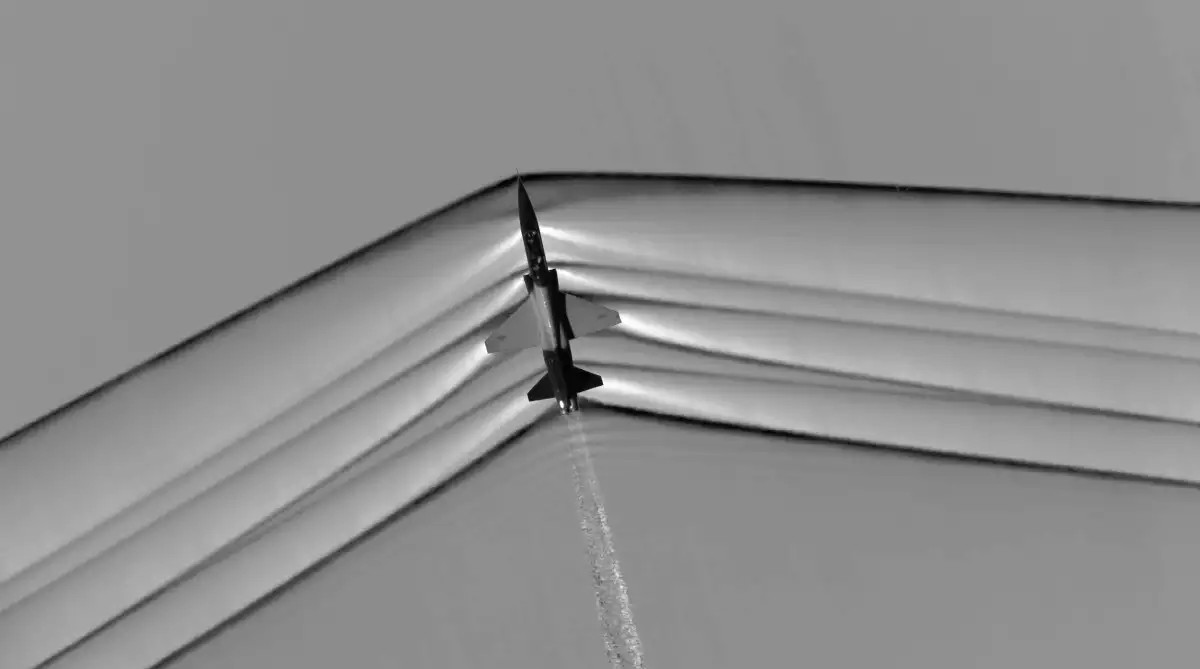
“What’s interesting is, if you look at the rear T-38 [in the pair photo], you see these shocks kind of interact in a curve,” Neal Smith, a research engineer with AerospaceComputing Inc. working at at NASA Ames’ Fluid Mechanics Laboratory, said. “This is because the trailing T-38 is flying in the wake of the leading aircraft, so the shocks are going to be shaped differently. This data is really going to help us advance our understanding of how these shocks interact.”
We’ll also hoepfully be seeing more of these beautiful and unique high-resolution Schlieren images in the future, too.
Contact the author: jtrevithickpr@gmail.com
